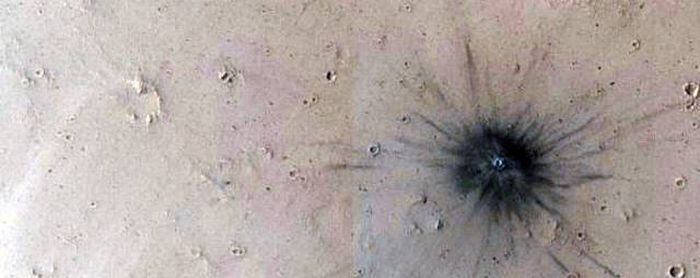|
|
Mars Photography By Mars Reconnaissance Orbiter
|
• Chloride deposits
Using data from Mars Global surveyor, Mars Odyssey and the Mars Reconnaissance Orbiter, scientists have found widespread deposits of chloride minerals. Evidence suggests that the deposits were formed from the evaporation of mineral enriched waters. The research suggests that lakes may have been scattered over large areas of the Martian surface. Usually chlorides are the last minerals to come out of solution. Carbonates, sulfates, and silica should precipitate out ahead of them. Sulfates and silica have been found by the Mars Rovers on the surface. Places with chloride minerals may have once held various life forms. Furthermore, such areas could preserve traces of ancient life.
• Other aqueous minerals
In 2009, a group of scientists from the CRISM team reported on 9 to 10 different classes of minerals formed in the presence of water. Different types of clays (also called phyllosilicates) were found in many locations. The physilicates identified included aluminum smectite, iron/magnesium smectite, kaolinite, prehnite, and chlorite. Rocks containing carbonate were found around the Isidis basin. Carbonates belong to one class in which life could have developed. Areas around Valles Marineris were found to contain hydrated silica and hydrated sulfates. The researchers identified hydrated sulfates and ferric minerals in Terra Meridiani and in Valles Marineris. Other minerals found on Mars were jarosite, alunite, hematite, opal, and gypsum. Two to five of the mineral classes were formed with the right pH and sufficient water to permit life to grow.
|
|









